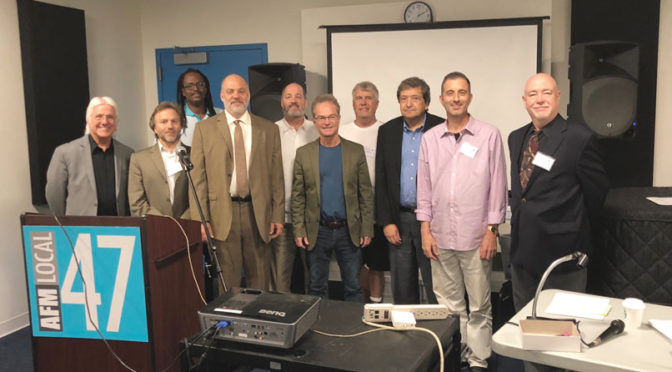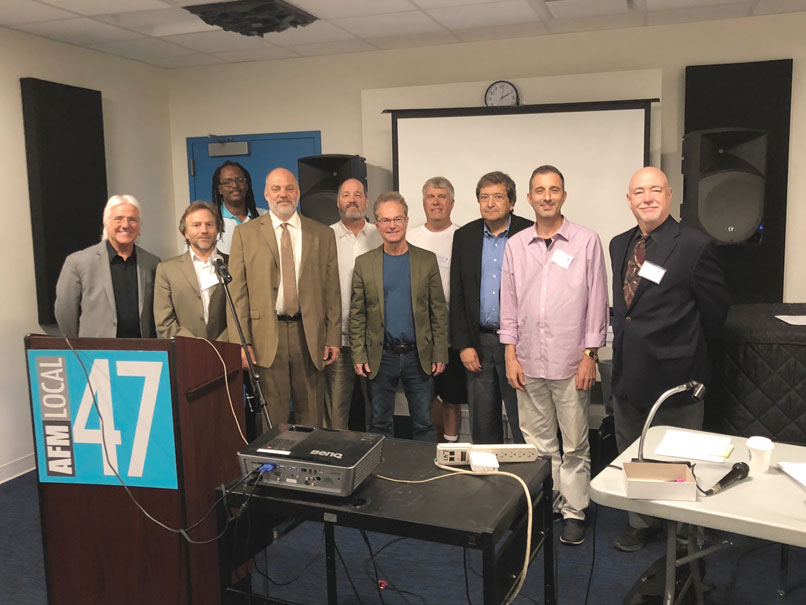
by Tony D’Amico, President of the Theatre Musicians Association and Member of Locals 9-535 (Boston, MA) and 198-457 (Providence, RI)
Greetings from the Theatre Musicians Association (TMA) world headquarters in north central Massachusetts, where the robins have returned, the flowers are blooming, and a faint light can be seen at the end of the pandemic tunnel. The feeling in the air today is quite different from the last time I wrote in these pages, back in the bleakness of November. Effective vaccines have been developed, approved, and are getting into arms at an impressive rate. In the music business, after a dark year of virtually no in-person performances, tentative plans are being announced for the long-awaited return to live music. I am feeling cautiously optimistic when I speak to my colleagues across the Federation.
You are well aware that Broadway and all national musical theater tours abruptly closed down in mid-March of last year. Pamphlet B, the international agreement that covers all AFM sanctioned tours, expired around the same time, March 15, 2020. With no musical productions lighting up Broadway theaters or coming to a town near you, the Broadway League informed us they had no interest in sitting down at the bargaining table to negotiate a successor agreement.
While disappointing, the extra time has allowed TMA, along with Touring, Theatre, Booking Division Director Tino Gagliardi, to come up with the reopening safety protocols that were presented to you in a previous issue of the International Musician. The extra time also allowed us to survey our membership and delve into the issues that we would like to see addressed in the next set of negotiations. AFM President Ray Hair has assembled a terrific negotiating team, and I look forward to sitting down with them soon to improve this contract.
One of the issues that TMA members repeatedly mentioned in our survey was concern over the ever-shrinking size of pit orchestras, and how the use of increasingly sophisticated technology is advancing this trend. We have seen the replacement of musicians by electronic devices for decades.
Pit orchestras are at an inherent disadvantage because they are, for the most part, hidden below stage level or, with ever-growing frequency, in a remote room. The audience doesn’t see that a 25-piece Broadway orchestra has been reduced to a 10-piece band on a traveling tour, thanks to the assistance of computers and virtual orchestras.
There is a new technology on the electronic musician replacement scene that is raising alarm bells within TMA and AFM leadership. It’s called KeyComp, and it is possible you have never heard of it. However, as it may very well change the way musicians are hired and employed in the future, it’s important for theater and non-theater musicians alike to become familiar with this device.
Recently, orchestra numbers were reduced by the use of keyboard “patches.” These sampled sounds allow flexibility of tempo due to being performed live by a keyboardist, but left a lot to be desired in terms of quality. Enter KeyComp—a machine developed by a German software developer named Christoph Buskies, who has worked at Apple Computer since 2000. Using technology developed by Buskies and recorded input of real acoustic instruments played by musicians, parts are broken down into individual beats, which in turn allow the KeyComp operator to make changes in tempo without altering pitch. The result is a flexible performance, using sounds that are remarkably close to the real acoustic instrument because they are recordings of real acoustic instruments. An entire musical score can be loaded onto KeyComp, and played by a few keyboardists. This is troubling, to say the least.
What can be done? Ever since the 1927 introduction of talkie movies began putting accompaniment pianists out of work, we have tried to stem the march of technology, with varying degrees of success. It is through educating the public that we will be able to prevent the pit musician from going the way of the dodo.
A symphony patron would never allow for a Mahler symphony to be played at Boston Symphony Hall with 20 players and a bunch of machines. That’s ridiculous! We need the theatergoers to stand up and demand the same. We need to continue our message of “Live music is best.” Patrons must realize that they are not getting their money’s worth when they go to an expensive show to hear a score played by anything less than a full orchestra.
I recall doing a run of White Christmas a number of years ago, and the score called for a large orchestra—complete with the luxury of a string section! Overhearing audience comments after the show, I was struck by the one thing that came up over and over again: that orchestra sounded great. Perhaps they didn’t know it, but it was because they were hearing the music the way it was meant to be. That is, performed live, by some of the greatest musicians in the world. It’s a message we can all be passionate about.




